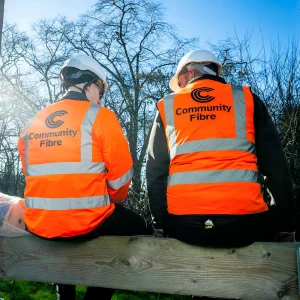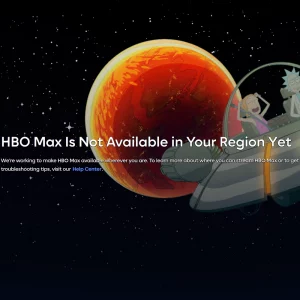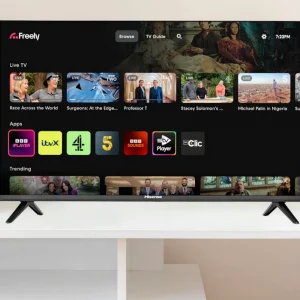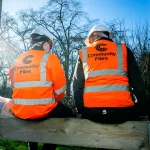Sponsored Links
DSL Rings Could Deliver 400Mbps Broadband Over Existing Copper UK Phone Lines
Posted: 04th Nov, 2010 By: MarkJ

 A Canadian firm called Genesis Technical Systems has told ISPreview.co.uk that its new bonded DSL Rings technology, a low cost - low power solution that utilises two copper pairs (i.e. two phone lines), could be used by BT to extend the economic life of its existing copper wire based UK telecoms infrastructure "for decades" by delivering broadband ISP speeds of up to 400Mbps; even "over long distances".
A Canadian firm called Genesis Technical Systems has told ISPreview.co.uk that its new bonded DSL Rings technology, a low cost - low power solution that utilises two copper pairs (i.e. two phone lines), could be used by BT to extend the economic life of its existing copper wire based UK telecoms infrastructure "for decades" by delivering broadband ISP speeds of up to 400Mbps; even "over long distances".On the surface this might not seem like much of a step forward, especially after Nokia Siemens Networks (NSN) recently claimed a DSL broadband speed of up to 825Mbps over existing copper (distance of 400 metres), not to mention Huawei's 700Mbps (here and here). However in an exclusive interview, Genesis informed us that DSL Rings is a far cheaper and more practical solution.
Stephen Cooke, President and CTO of Genesis, told ISPreview.co.uk:
"DSL Rings is far less sensitive to distance than conventional DSL architectures and can maintain bandwidths of 20x or more than current offerings at most distances from the Exchange.
Huawei's announcement uses 4 pairs with bonding and vectoring. 4 pairs to a house is not very common in the existing network at all, and would need to be deployed from a powered site (i.e. remote line powering is not an option, meaning that mains power, cabinets, batteries and HVAC systems are necessary - read: expensive deployment costs).
Nokia's announcement uses 2 pairs but needs 3 VDSL2 chips per house. 2 pairs are the most common configuration in the existing network - which is why we use it as well. However, VDSL2 chips are very power hungry... Especially when they are trying to drive long lines. This means that Nokia's technology will need powered sites as well.
DSL Rings is generally remotely line powered (no batteries or HVAC systems required) and can be run from the Exchange without any fiber at all. However, DSLR can be used in conjunction with FTTC to provide higher bandwidths than FTTC/VDSL2 alone."
"DSL Rings is far less sensitive to distance than conventional DSL architectures and can maintain bandwidths of 20x or more than current offerings at most distances from the Exchange.
Huawei's announcement uses 4 pairs with bonding and vectoring. 4 pairs to a house is not very common in the existing network at all, and would need to be deployed from a powered site (i.e. remote line powering is not an option, meaning that mains power, cabinets, batteries and HVAC systems are necessary - read: expensive deployment costs).
Nokia's announcement uses 2 pairs but needs 3 VDSL2 chips per house. 2 pairs are the most common configuration in the existing network - which is why we use it as well. However, VDSL2 chips are very power hungry... Especially when they are trying to drive long lines. This means that Nokia's technology will need powered sites as well.
DSL Rings is generally remotely line powered (no batteries or HVAC systems required) and can be run from the Exchange without any fiber at all. However, DSLR can be used in conjunction with FTTC to provide higher bandwidths than FTTC/VDSL2 alone."
DSL Rings can apparently be installed for approximately 5% of the cost of Fibre-to-the-Home ( FTTH ) fibre optic broadband, which Genesis claims is the only other technology capable of offering bandwidths on this order. FTTH speeds traditionally reach up to 100Mbps (symmetric), although 1Gbps (1024Mbps) is possible.
The technology itself is deployed in a RING configuration and uses three existing telecom standards, RPR, VDSL2 and G.Bond. Genesis believes that its ability to sustain 400Mbps over long distances could also help to "accommodate rural needs", which have often felt excluded by other DSL innovations that only work with shorter runs.
We were curious to know how well these DSL Rings would do over specific distances, such as 400 metres (like the other solutions). Cooke noted that, under "real" conditions, in "telco labs" Genesis has been able to achieve well over 300Mbps, combined upstream and downstream (i.e. 150Mbps in each direction), with a system that can be powered from the exchange (read: no mains power, cabinets, batteries and HVAC systems required).
Stephen Cooke clarified:
"Perhaps I should explain that DSL Rings bonds potentially 50 pairs together to deal with distance from the DP to the exchange. What this means is that, depending on the bandwidth achievable per pair by standard ADSL2+ (for example at 1km that is about 10-12Mb/s) and the number of pairs available to be bonded, we can provide that 300+ Mb/s at 400m and to distances out past 3km.
In regards to latency, the traffic will only pass through, at most, half the number of houses on a ring (e.g.: in a ring with 8 houses, the traffic will go through 4). [this would most likely only increase latency by] 9ms (as there is a modem in the path of those systems today that provides delay) compared to existing DSL systems with a >20x increase in bandwidth at most distances."
"Perhaps I should explain that DSL Rings bonds potentially 50 pairs together to deal with distance from the DP to the exchange. What this means is that, depending on the bandwidth achievable per pair by standard ADSL2+ (for example at 1km that is about 10-12Mb/s) and the number of pairs available to be bonded, we can provide that 300+ Mb/s at 400m and to distances out past 3km.
In regards to latency, the traffic will only pass through, at most, half the number of houses on a ring (e.g.: in a ring with 8 houses, the traffic will go through 4). [this would most likely only increase latency by] 9ms (as there is a modem in the path of those systems today that provides delay) compared to existing DSL systems with a >20x increase in bandwidth at most distances."
At present Genesis hopes to have a finished solution available in 2011. In theory it could be adopted into BT's existing 40-60Mbps FTTC infrastructure for a significant speed boost, which would appear to bode well for the future.
However BT currently has no known plans to enhance its recently launched FTTC service beyond an eventual speed boost up to 60Mbps. The fact that such solutions also tend to require two phone lines, and all the extra costs that would involve, would still make it a tough sell to consumers.
Search ISP News
Search ISP Listings
Search ISP Reviews
Latest UK ISP News








Cheap BIG ISPs for 100Mbps+
150,000+ Customers | View More ISPs
Cheapest ISPs for 100Mbps+
Modest Availability | View More ISPs
Latest UK ISP News
Helpful ISP Guides and Tips
Sponsored Links
The Top 15 Category Tags
- FTTP (6768)
- BT (3873)
- Politics (3061)
- Business (2752)
- Openreach (2651)
- Building Digital UK (2504)
- Mobile Broadband (2458)
- FTTC (2139)
- Statistics (2118)
- 4G (2079)
- Virgin Media (2011)
- Ofcom Regulation (1773)
- 5G (1716)
- Fibre Optic (1597)
- Wireless Internet (1591)
Sponsored
Copyright © 1999 to Present - ISPreview.co.uk - All Rights Reserved - Terms , Privacy and Cookie Policy , Links , Website Rules
































